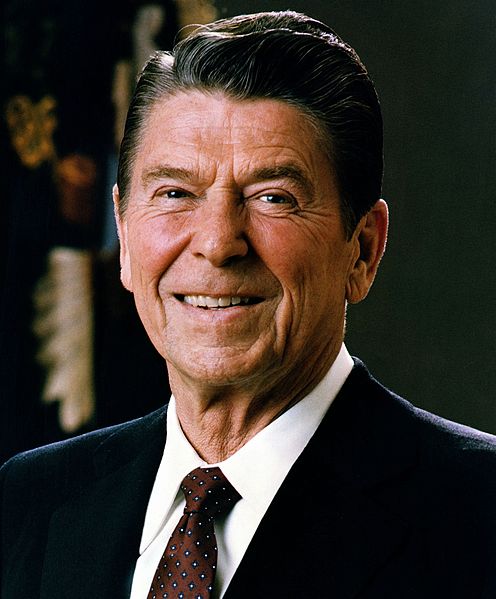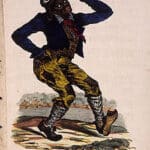McCulloch v. Maryland is one of those Supreme Court cases that the APUSH exam loves to ask about, and with good reason. This case did a lot of important things for U.S. history, like delineating the authority of Congress through implied powers and providing legal precedence for federalism. This post will walk you through the McCulloch v. Maryland APUSH topics you should know for the test.
What was the issue being debated in McCulloch v. Maryland?

Promissory note issued by the Second Bank of the United States (Source)
The summary of this case is not as important as the implications of it. However, to understand the implications, you gotta know what’s going on. This will be a short and sweet summary, but I suggest consulting the video below from the Bill of Rights Institute for more detail.
The story starts in 1816, when Congress passed a law chartering the Second Bank of the United States. In 1817, the Second Bank opened its second location in Baltimore, Maryland (its first was in Philadelphia). Seems pretty simple, right?
WRONG.
The state of Maryland was like, “WHOA, GUYS. What do you think you’re doing? The federal government has no authority to establish a bank in our state.” And the state of Maryland sort of had a point here. I mean, the Constitution says that Congress has certain expressed powers, like taxing and coining money. But does that mean establishing a bank in a city that’s not the District of Columbia, without a state’s permission?
In February of 1818, the state of Maryland decided to get tough on the federal government. The state legislature passed an act that would impose a tax on all banks and their branches that were not chartered by the state legislature; yup, that means the Second Bank of the United States.
The Baltimore branch head, James William McCulloch, refused to pay any taxes and Daniel Webster, representing the branch, sued the state of Maryland. At first, the Maryland court argued that the Constitution didn’t say anything about banks; therefore, the action of taxing the Second Bank of the United States was totally legit. The Supreme Court, however, had a different point of view.
What was the Supreme Court’s decision in McCulloch v. Maryland?
In 1819, the Supreme Court unanimously overruled the state of Maryland’s decision. As is the case with most legal issues, there’s a lot of jargon in the decision. But I do want you to read the following excerpt from the Constitution, as it forms the foundation of the decision Chief Justice John Marshall wrote:
-
“The Congress shall have Power … To make all Laws which shall be necessary and proper for carrying into Execution the foregoing Powers, and all other Powers vested by this Constitution in the Government of the United States, or in any Department or Officer thereof.” (Source)
Of course, that excerpt is the Necessary and Proper Clause of the Constitution. And that Necessary and Proper Clause, Marshall argued, meant that the Constitution implied powers for Congress; establishing a bank was one of them.
As establishing a bank was necessary (and proper!) for the federal government to do in order to collect taxes and so on, the Second Bank of the United States was allowed to set up shop in Baltimore. Marshall also decided that it was the people of the United States, not the states themselves, that were sovereign. If you read my blog post on Marbury v. Madison, you would know that Marshall had a knack of doing these Jedi mind tricks in interpreting the Constitution that kept the federal government at the top of the power hierarchy, and the Supreme Court as the final arbiter of Constitutionality.
Why does McCulloch v. Maryland matter so much?
I believe that, in this case, it’s best to let John Marshall speak for himself.
First, Marshall wrote, “Although, among the enumerated powers of government, we do not find the word ‘bank,’…we find the great powers to lay and collect taxes; to borrow money; to regulate commerce…Let the end be legitimate, let it be within the scope of the constitution, and all means which are appropriate, which are plainly adapted to that end, which are not prohibited, but consist with the letter and spirit of the constitution, are constitutional.” This means, in short, that the federal government can claim that a process is constitutional if it leads to an expressed power (even though the process itself might not be outlined in the Constitution).
Finally, Marshall ruled, “That the power to tax involves the power to destroy…. If the states may tax one instrument, employed by the [federal] government in the execution of its powers, they may tax any and every other instrument…. This was not intended by the American people. They did not design to make their government dependent on the states.” The states did not have the right to tax the federal government, plain and simple.
Can you tell that Marshall was a federalist?
What is an example McCulloch v. Maryland APUSH question?
This question comes from the 1999 AP U.S. Government and Politics exam.
In McCulloch v. Maryland, the Supreme Court established which of the following principles?
A. States cannot interfere with or tax the legitimate activities of the federal government.
B. The judicial branch cannot intervene in political disputes between the President and Congress.
C. The federal Bill of Rights places no limitations on the states.
D. It is within the judiciary’s authority to interpret the Constitution.
Correct Answer:
The answer to this McCulloch v Maryland APUSH question is A. This was established through the Necessary and Proper Clause of the Constitution and put implied powers as a part of the powers of the federal government. If you got tripped up and selected D, note that although the Supreme Court interpreted the Constitution in McCulloch v. Maryland, this case did not establish that principle: Marbury v. Madison did.





